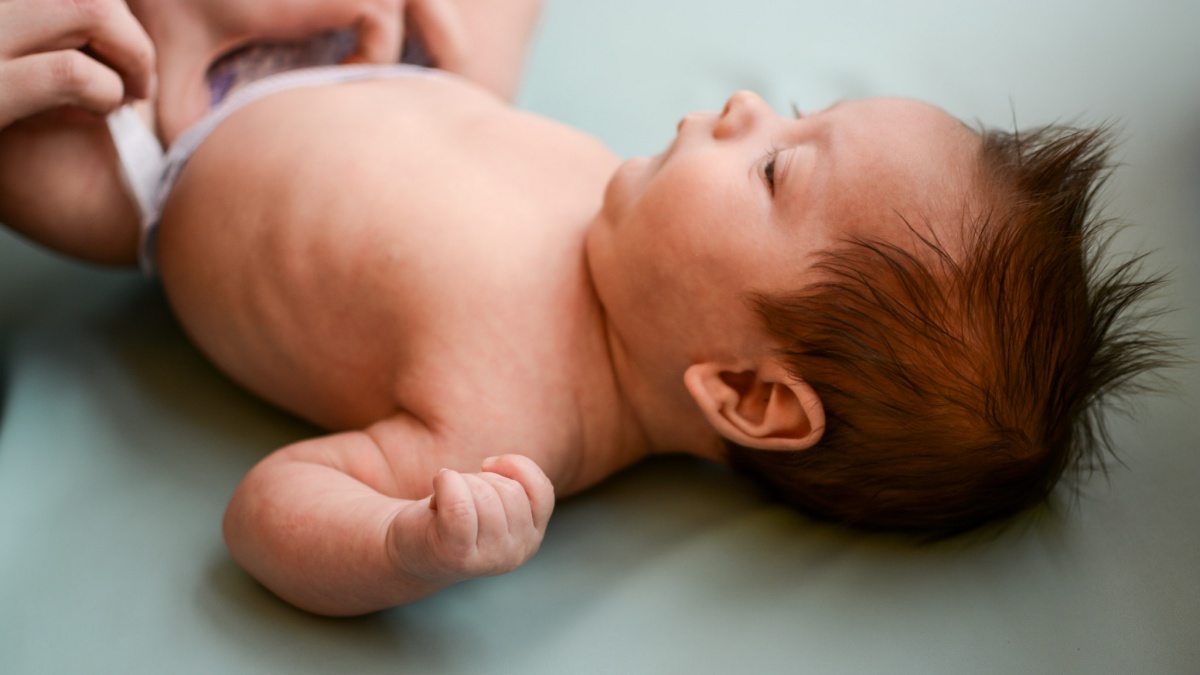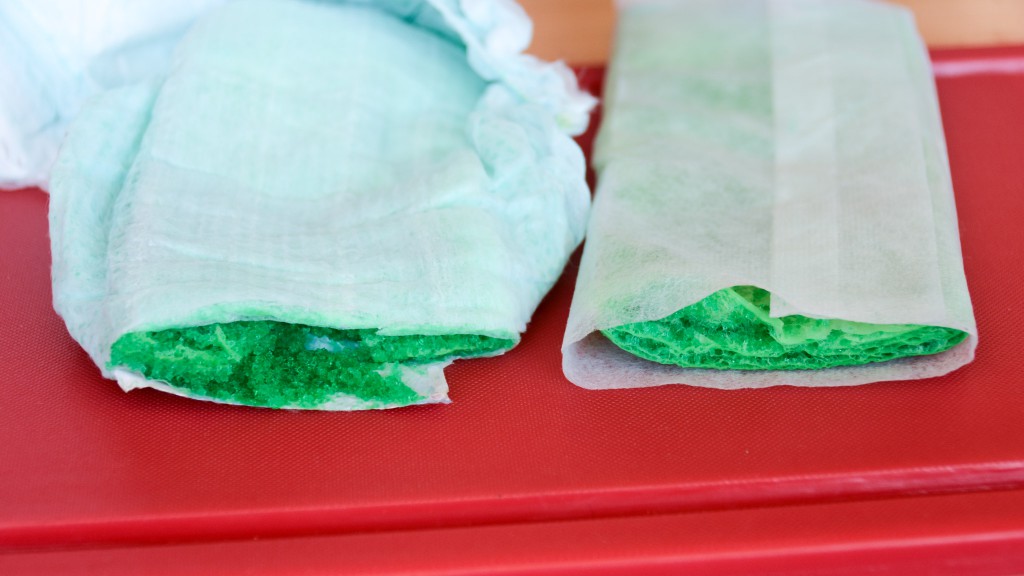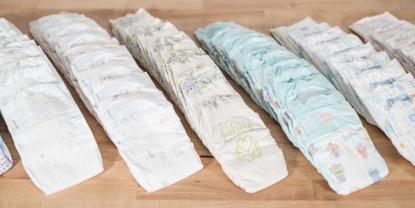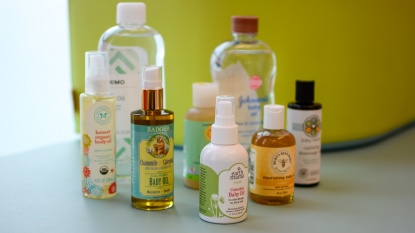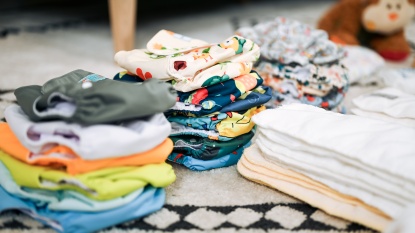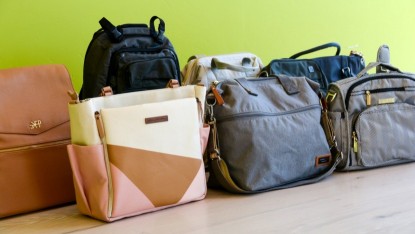Keeping your baby dry and happy is critical to getting a good night's sleep for both of you. If you are still using daytime diapers, and your little one routinely soaks through them, finding a super-absorbent overnight diaper can be a game-changer. After all, babies don't like waking up to a cold, wet diaper and often cry, disrupting the whole house when they do. Parents are equally nonplussed, waking up to change diapers and potentially bedding in the middle of the night. Don't even get us started on the extra laundry.
Want to learn the basics or brush up on your knowledge of laundering cloth diapers? Our article, Cloth Diaper Laundering Basics & Helpful Hints, can help. Don't forget to select one of our favorite baby detergents.
Most ordinary diapers cannot absorb the liquid levels little ones can produce over the span of 10-12 hours. Manufacturers assume (hopefully correctly) that you regularly change your baby's diaper during the day, so often don't provide extended coverage. Overnight diapers have more Super Absorbent Polymer, (SAP) than regular diapers to help absorb the increase in urine that comes with a full night's sleep. While not specifically labeled as "overnights," a few brands work well at any hour of the day. Pampers Baby Dry advertises "12-hour protection," and Luvs Ultra Leakguards have their "nightlock plus" moniker. As we discovered in our absorbency tests, both options do a great job absorbing excess fluid and locking it away from the baby's skin. In our experience, these products live up to their marketing claims.
How do You Choose?
Choosing the best long-wearing diaper amid the multitude of manufacturer claims is difficult. Nighttime routines and needs vary from family to family, and there isn't a single best diapering solution for every baby. To help you find the best overnight product for your baby, we consider the critical components of a great overnight diaper and compared the qualities of different brands. Absorbency, cost, fit, comfort all come into play, as well as traditional versus green versus cloth options.
Absorbency
How well a diaper absorbs liquids is arguably the most critical consideration for choosing an excellent overnight diaper. A great diaper absorbs liquid quickly and keeps it locked away, so your baby's skin stays dry. For disposable diapers, SAP is the secret ingredient to attain high absorbency levels. SAP is a petroleum by-product that can absorb up to 300 times its weight in liquid! While it is not biodegradable, SAP is generally considered safe. Currently, there are no plant-based SAPs on the market, though they are in development. Moisture-wicking surface material combined with a SAP-filled core is essential to keeping skin dry and healthy. Luvs and Pampers Swaddlers Overnights both earned high scores for absorbency in our tests.
Cloth diapers rely on different materials to keep little ones moisture-free. Padding, pockets, and inserts work together to absorb and retain liquids, drawing them away from the skin. While they can't absorb as much fluid as SAP, the right combination of absorbing and wicking materials can manage to hold their own while preventing midnight urine nightmares. Cloth diapers also include waterproof or water repellent outer covers to help further prevent urine from soaking into clothing and bedding. Several cloth options offer impressive results during our tests. Sustainablebabyish Snapless Multi Fitted has superior moisture lock and absorbency, earning a top score for the group. The Rumparooz Pocket follows close on its heels.
Cost
Overnight diapers are frequently pricier than daytime diapers. They require more materials to manufacture and contain more SAP and other absorbing materials to prevent leaks during the nighttime hours. Depending on your needs, this added cost might be well worth it. Using overnight diapers can decrease the number of regular diapers you use every night, saving you money and effort in the long run. Luckily, we discovered that the least expensive disposable diapers we tested also happen to be some of the most impressive. Luvs diapers earned a top score for absorption and are some of the lowest-priced diapers in this review.
Fit and Comfort
Finding the perfect fit is paramount when it comes to leak prevention, especially during the night. Even a diaper with excellent absorbency may fail if it doesn't fit properly. The overall fit can vary depending on the size of the diapers, the brand you purchase, and your baby's shape. To complicate matters further, there is no standard for diaper sizes, so a size three can differ from brand to brand. The sizing differences between brands can result in a bit of trial and error and poorly fitting underpants, especially if your baby is outside of the average weight range, either thin or chunky.
Overnight diapers should be comfortable and have minimal gapping around the thighs and waist. There should be some wiggle room for adjustment around the waist provided by elastic along the upper back. This stretchiness may help contain potential blowouts. We suggest purchasing smaller quantities of diapers until you locate the size and brand that works best for your child. This approach is especially vital with green brands like Bambo Nature and Eco by Naty. The size ranges in these diapers can sometimes be vastly different than traditional brands. If your baby has sensitive skin, the rougher feel of some green diapers may chafe and irritate, especially if the diaper is too small or tight-fitting. Diapers that contain fragrances or pigments (especially on the inner part of the diaper that touches the baby's skin) may lead to a diaper rash. Once you find a solution that you think is best, you can start buying in bulk.
Diapers intended for the daytime can fail when used overnight, particularly with heavy wetters. Standard troubleshooting often includes sizing up, frequent nighttime changes, or double diapering. While these solutions may work for some babies and toddlers, they don't work for the majority and are a hassle for parents. Sizing up can create gaps for leaking, and doubling up increases the overall bulk, impacting sleep comfort. Plus, double the diapers is double the cost.
Traditional versus Green versus Cloth
When choosing diapers, you have three choices: traditional, green (i.e., Nature BabyCare, Bambo, etc.), and cloth. Typically, traditional diapers are easy to find in the grocery store, with familiar brand names such as Huggies and Pampers. However, sometimes overnight-specific diapers from these same brands can be challenging to find and might require an online purchase. Traditional overnights historically work well enough but often contain fragrances, lotions, pigments, and phthalates that may aggravate babies' skin with allergies and sensitivities. Pampers Swaddlers Overnights and Luvs Ultra Leakguards are our review's top-performing traditional products.
Alternatively, green diapers claim to use more eco-friendly practices during production and are often free of fragrance, lotions, and phthalates. Consequently, they are usually more expensive; but they can be a better choice than traditional options depending on your needs. Eco by Naty and Bambo Nature are the top-performing green diapers in our tests.
What Is Inside Those Disposable Diapers? explains more about diaper ingredients and what they mean for your baby. If you have questions about green vs. traditional diapers, we can offer you some helpful hints.
If you're looking for something more eco-friendly, we suggest looking into cloth diapers. Many options have come a long way, and nowadays, there are various brands and super user-friendly designs. We feel cloth diapering is worth serious consideration, and we think you'll be surprised at how easy it can be once you find your perfect system and start the process. Admittedly, it requires more effort than disposable diapers due to the laundering process; it also provides cost savings and reduces landfill waste. Another significant benefit of cloth diapers is that they don't contain SAP, fragrances, or lotions, not to mention they make an adorable fashion statement. These features make cloth an excellent choice for babies with sensitive skin or allergies to traditional diapers. Because there are a variety of types to consider, there is a learning curve for newbies, but it isn't a highly problematic avenue to negotiate. We believe cloth is an intriguing option and encourage you to read more about them. The Rumparooz Pocket and Sustainablebabyish Snapless Multi Fitted are some of the best-performing cloth options in this overnight roundup.
Pre-bedtime Strategy
Using the perfect overnight diaper can be critical to a good night's sleep but is only half of the battle. Making a few alterations to your child's nightly routine can help decrease the odds that they will soak through a diaper while sleeping.
- Limit liquids before bed — Avoid offering toddlers drinks shortly before bed. If you can, try to limit fluids up to an hour before bedtime. If they get thirsty (and are not sick), a few sips of water should do.
- Put the diaper on last — You want the diaper to be dry when your baby hits the hay. Before you lay your baby down, the final thing to do is to put on a clean diaper. It is easy to get sidetracked during a nighttime routine, and before you know it, your little one's diaper is pre-used before they even get in their crib. Toddlers especially are professionals at stalling bedtime, so we suggest delaying the overnight diaper application until you're ready to tuck them in. We can't stress this enough.
- Diapering logistics — When putting on the diaper, pull out the inner ruffle (if present) to remove any gapping and help prevent leaks. Also, if you have a boy, position his penis down (to reduce front/top leaks) before closing the diaper.
Conclusion
In the end, which overnight diaper is right for your situation depends on your baby, how much they drink, how much they pee, and what kind of sleep habits they have. You also need to consider your goals of using cloth, disposable, or finding a great green selection. We think once you've decided on your goal, your budget, and the needs of your little one, you'll find the one diaper meant for you.

